PROJECTS RESHAPE MU’S CAMPUS
PAGE 7
HISTORY LOST AT THE CLICK OF A BUTTON
PAGE 18
NAVIGATING A STEAKHOUSE MENU
PAGE 35
GO WHITEWATER KAYAKING
PAGE 42

PROJECTS RESHAPE MU’S CAMPUS
PAGE 7
HISTORY LOST AT THE CLICK OF A BUTTON
PAGE 18
NAVIGATING A STEAKHOUSE MENU
PAGE 35
GO WHITEWATER KAYAKING
PAGE 42

When waters rise, the unyielding buoyancy of Missouri’s riverside communities only grows stronger.
PAGE 24

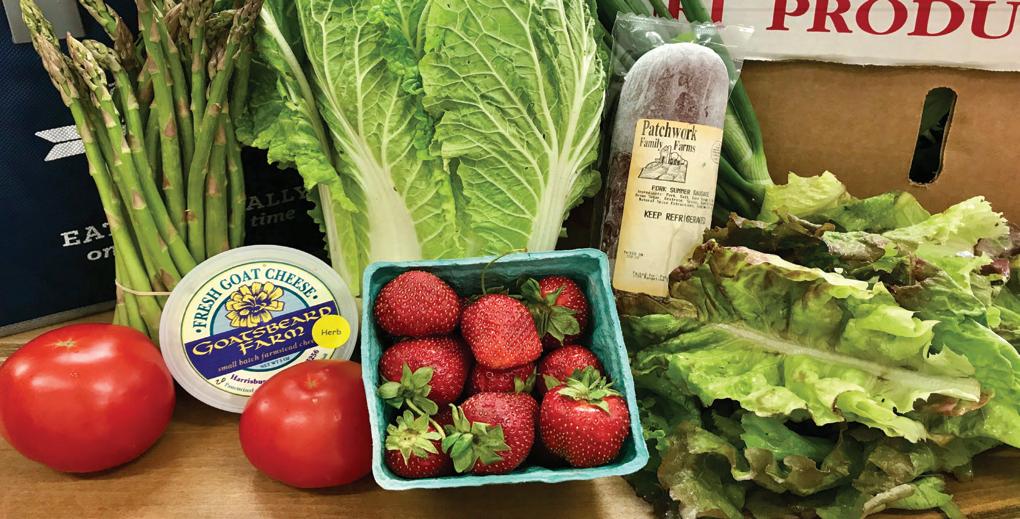














From age 8 to age 20, I spent every summer at camp on the banks of the Guadalupe River in the Texas Hill Country. In its waters, I learned to swim. I managed to not tip over my canoe. I pushed people in and got pushed in myself. Despite my deep disgust of fish, I began fishing in the river as I got older, and eventually I began teaching it as well. I even became brave enough to actually touch a fish and cut it off the line (but don’t ask me to eat it).

Happiness for me is life on the river. It’s where I grew up, learned right from wrong and had a lot of fun. But beyond that, rivers are powerful, meandering through the land, feeding and sustaining the wildlife and communities built up around them.
Life for Missourians revolves around the rivers, too. There are 110,000 miles of running water in the state, according to the Missouri Department of Conservation. There are more than 30 major rivers, the biggest and most famous being the Missouri and Mississippi.
“Our rivers and streams are a source of pride for Missourians,” the Missouri Department of Conservation writes. “We rely on them for our quality of life, and we must care for them.”
Which makes the recent flooding all the more heartbreaking. After heavy storms throughout the spring, Missouri’s rivers began to rise to heights not seen since the Great Flood of
1993. The flooding that year caused $15 billion in damages. AccuWeather predicts the damage of this year could reach $12.5 billion. Almost 400 roads across the state were shut down after the storms in late May, and intense flooding turned places such as Cooper’s Landing and McBaine into a Midwestern Atlantis.
In the wake of all this destruction and suffering, it’s easy to focus on how the dangers of river life can lead to loss. But, instead of drowning, people united to find the shore. During the flooding, communities came together to fight the rising waters. In Rocheport, volunteers packed nearly 100,000 sandbags to stack between the Missouri River and the Katy Trail. In Hartsburg, volunteers made 10,000 sandbags to pile up.
Rivers are powerful and beautiful. They are unpredictable, nourishing and destructive all at once. Communities spring up on the shore, marveling in its wonder. But, as you’ll see in our photo feature (p. 24), life along the river is defined by the people and not by the water alone.
In this issue, Vox explores the preservation of history and community in the face of forces outside of our control. Writer Katherine Herrick delves into how technological advancements change the way historians and archivists think about how we record artifacts. Photographer Antranik Tavitian journeys down three flooded Missouri rivers to document the resilience and camaraderie that keeps the spirits of riverside towns afloat. Immerse yourself in the stories of Missourians who fight to protect the past and future.
MANAGING EDITOR CATHERINE WENDLANDT DIGITAL MANAGING EDITOR MAC BLAIR CREATIVE DIRECTOR KELLYN NETTLES PHOTO EDITOR JESSI DODGE ASSISTANT EDITOR BIANCA RODRIGUEZCONTRIBUTING WRITERS ISAAC CARMICHAEL, SIOBHAN CONNORS, ABIGAIL MONTEIL, ALEXANDRA SHARP, ELIZABETH UNDERWOOD, GABRIELA VELASQUEZ, SAMANTHA VERDISCO

EDITORIAL DIRECTOR
ELIZABETH STEPHENS EXECUTIVE EDITOR JENNIFER ROWE OFFICE MANAGER KIM TOWNLAINADVERTISING 882-5714
CIRCULATION 882-5700
EDITORIAL 884-6432 vox@missouri.edu
CALENDAR send to vox@missouri.edu or submit via online form at voxmagazine.com
TO RECEIVE VOX IN YOUR INBOX sign up for email newsletter at voxmagazine.com
JULY/AUGUST 2019 VOLUME 21, ISSUE 7 PUBLISHED BY THE COLUMBIA MISSOURIAN 320 LEE HILLS HALL COLUMBIA, MO 65211
MAGAZINE
Cover Photo: Antranik Tavitian
In the June article about Talking Horse Productions theater’s production of BOY, a photo caption implied that the show is Rachel Bauer’s directorial debut. That is incorrect; this is the first time Bauer has directed for Talking Horse but not the first time she has ever directed.
CATHERINE WENDLANDT Managing Editor
“But, instead of drowning, people united to find the shore. During the flooding, communities came together to fight the rising waters.”
New technology means that traditional archiving methods are becoming obsolete. Now that we’re in the digital age, how do we record — and keep from losing — the artifacts of today?
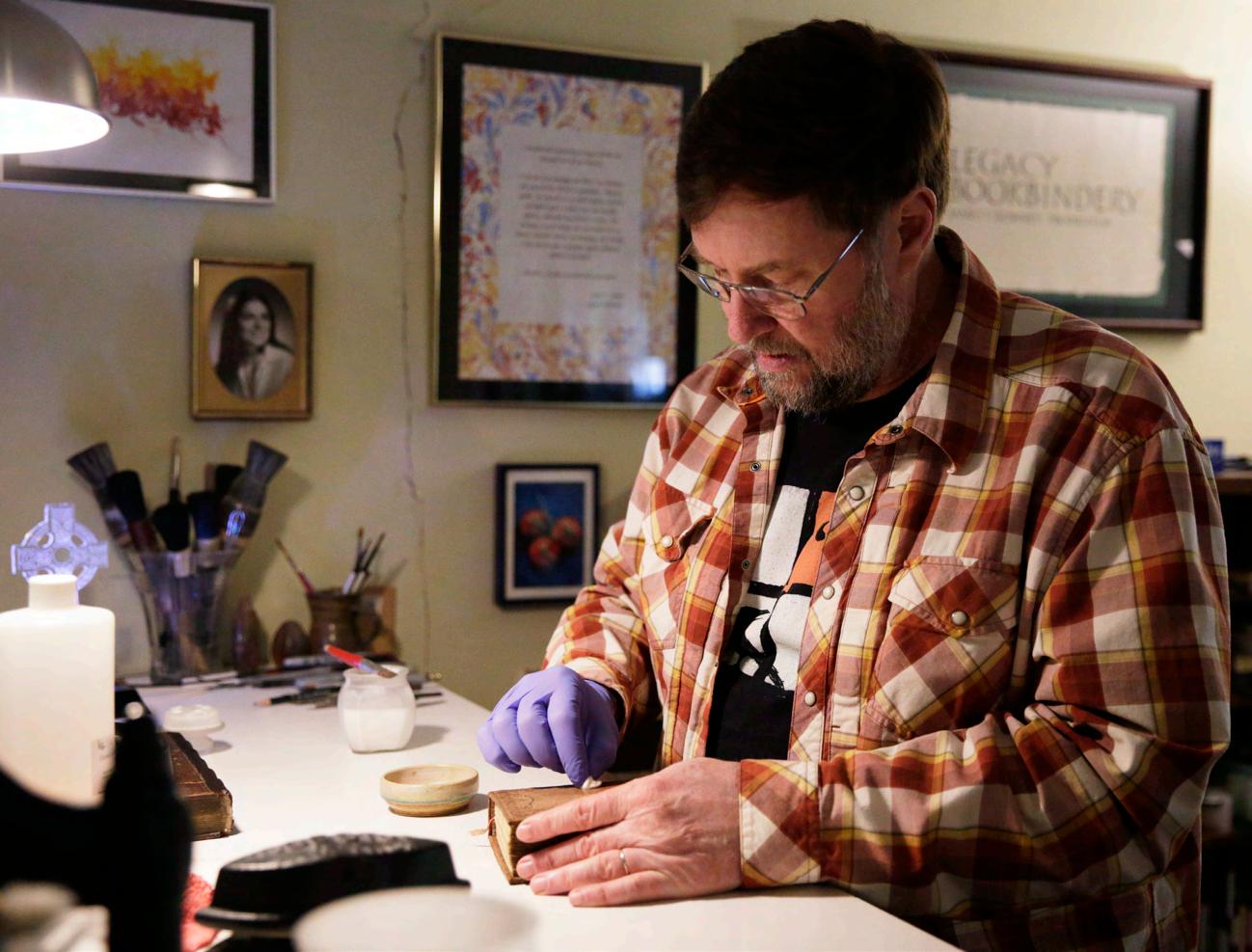 BY KATHERINE HERRICK
BY KATHERINE HERRICK
p. 24
Rising floodwaters might create uncertainty, but these struggles also make small riverside communities that much more tightly knit.
BY ANTRANIK TAVITIAN07
A Mizzou Make-Over
While students are away, MU takes on new projects, such as Jesse Hall’s face lift.

08
Vox Picks
Forget the boring dog days of summer. Your July and August are about to be jam-packed.


10
Reverend C.W. Dawson talks race, activism and Columbia’s potential for change.
11
The Movie Theater Manual

Lights off. Camera on. Action, if that’s the genre you’re into.
13
Bored? Watch This This summer is saturated with star-studded shows and movies.
14
Bringing a musical act to the city is no easy feat.
16
You Simply Must Meet Bryson
One MU alumnus on being a member of Hamilton’s cast.

17
Identity in Print
LGBTQ representation in YA novels is on the rise.

Summer’s arrival brings sounds of drills and hammers to MU.
BY ALEXANDRA SHARP
With a nearly empty campus and warm weather, now is the time to prepare for the coming school year. At MU, construction is in full swing with five major projects underway this the summer.
At the heart of campus, Jesse Hall’s dome will be under renovation until early October. All 96 windows and wooden frames will be replaced. According to Karlan Seville, MU’s communications manager, the work is necessary to protect the dome’s interior. At $2.5 million, it’s the cheapest project in the works.
“MU often waits until summer to begin projects that will disrupt the view of campus prior to spring commencement when families want photos of their graduating student in iconic locations on campus,” Seville wrote in an email.
At $221 million, the most expensive construction underway is the Precision Medicine Project. With construction ending in the fall of 2021, this research facility is the most expensive initiative ever undertaken by MU in its 180-year history.
Two construction projects, both started in 2017, are expected to be completed this summer. The Center for Missouri Studies, housing the State Historical Society of Missouri, costs $27 million. And the South End Zone Project at Memorial Stadium, which includes a new strength training facility and premium seating, has a $98 million budget.
Anyone roaming campus might also see ongoing construction on the School of Music, but this $24 million building won’t be completed until the fall.


Around downtown Columbia and The District’s Dog Days . Stores will have discounted goods, and restaurants will feature special deals during this fourJuly 25–28, The District, all ages, free, 442-6816
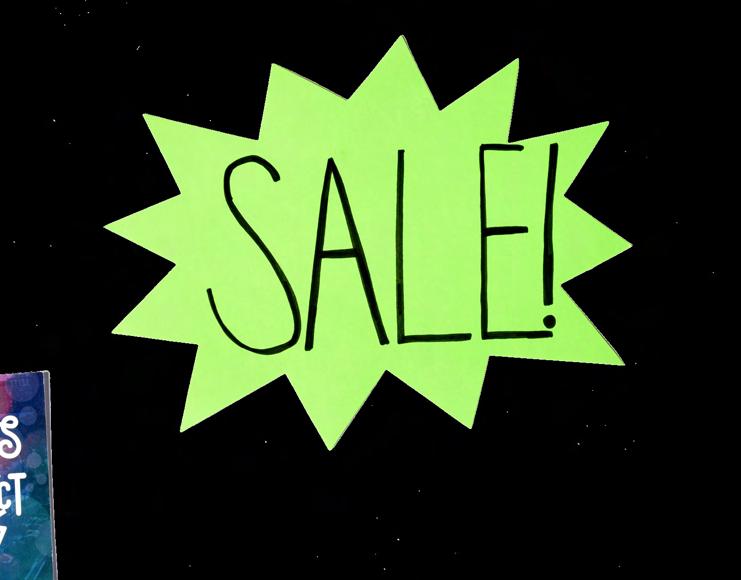
To CoMo-based musicians play on CoMo-made music equipment while you drink CoMo-brewed beer. Brewing Company’s second Byron Fest Park, will feature 12 acts performing with gear from Byron Amplification, a Columbia company that makes amps, cabs and pedals. Although the event is free, donations will be accepted at the door that benefit YAAL Rock.

July
14, Gates open at 1 p.m., Rose Music Hall, free,

Hot summer days away with The District’s newest event, in the District. Similar to the much-beloved Restaurant Week, this seven-day event will include passports for participants to fill out when they visit a bar or buy certain drinks. Passports will then be entered into a raffle.
Bottoms up! July 14–20, The District, 21+, free, 442-6816

Each month, Vox curates a list of our favorite shops, eats, reads and
Aug. 10, 1 p.m. bike clinic; 2 p.m. to midnight, dawdle, $60–80, 442-8783




Craft beer from all over the country at this year’s South East Craft Beer Fest. Beer enthusiasts will enjoy the finest brews from all over the country, live music and a charity golf tournament benefiting Welcome Home. Aug. 23, golf tournament; Aug. 24 festival, Columbia Country Club; Cosmo Park, $150 for golf; $10–50 for festival, 314-884-2011
Under the stars, and spend your days in the sun, all while listening to Missouri bands play their hearts Elderberry Jam. This two-day camping event in Hartsburg is a close-to-home vacation from real life, where there are kid-friendly activities, food and drink vendors, and a whole lot of Aug. 2–4, Hartsburg, $25 one-day pass; $50 two-day pass; free for kids 12 and under

As a fourth-generation preacher who grew up during the height of the civil rights movement, C.W. Dawson Jr. says all conversations about race are important, especially in the Columbia community.
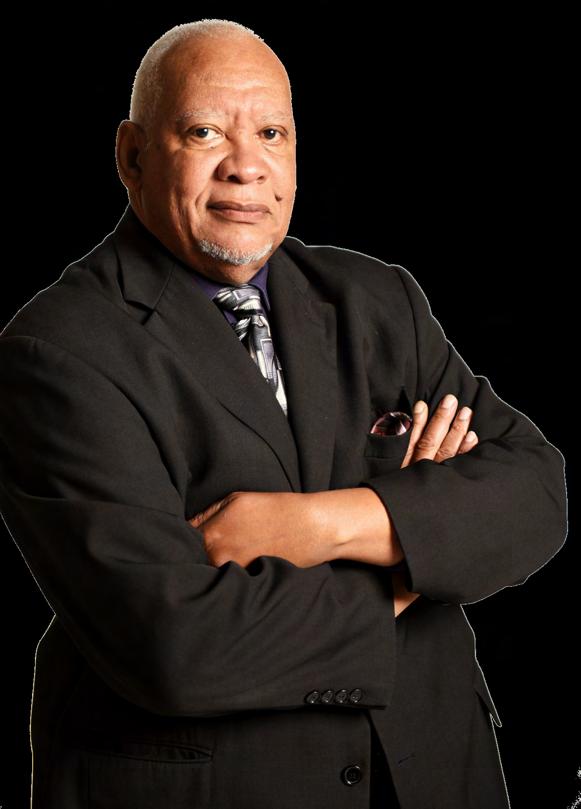
Dawson grew up in a house of social activists. The Southern Christian Leadership Conference movement, the NAACP and Marcus Gravey were important to his mother, father and grandparents, so he knew he’d likely follow in their path. He read at a fourth-grade level when he graduated high school in Joplin, but improved during his undergraduate years at Cornell College in Iowa. Dawson graduated with three majors, philosophy, religion and political science, and two minors, French and mathematics. In 1979, he received his
first master’s degree from Princeton, and after nearly 10 years of working as a minister, Dawson went to MU and graduated as the first African American to earn a doctorate in philosophy at the university in 2006. Now, Dawson teaches ethics at Moberly Area Community College and philosophy at Columbia College, is the senior minister at Dawson Journeys Ministry and writes a weekly column for the Columbia Missourian. In December 2017, he published his first book, La Conversation Fracturée, which takes a philosophical look at concepts of race in America.
Dawson discussed his history with race and activism and the conversations surrounding the topics with Vox. This interview has been edited for clarity.
Why are you invested in the Columbia
There’s an old saying that goes, “You have to bloom where you’re planted.” And Columbia is my place now. It’s one thing to talk theoretically about justice and what we ought to do. But if that person is not very invested in the community they live in, that seems a little hypocritical to me. And I think the problems we have in Columbia are solvable. I really do think we can have a police department that is community-oriented. We have a significant homeless population, but there are a lot of empty places: We can help people. We won’t be perfect. We can be a lot better.
What do you think of this era of activism?
I’m impressed with the younger generation, particularly of African Americans. Black Lives Matter I
think is wonderful, but I think it’s been misunderstood. I think it’s always been hard to be socially conscious. I think the demands of academia and the workforce on black people has really either fired young black folks up or has stolen their spirits. While you’re in school, you’re constantly told you are not successful unless you do “X,” where you have to spend all of your time. If you’re not careful, you’ll say, “I’ll be involved when I leave school.” And of course, if you’re really successful, you’re going to have a house, a certain kind of car and so much in the bank account, and then you can be active later. And what happens is (social activism) doesn’t happen.
You were the first African American to earn a doctorate in philosophy at MU. What is it like to carry that kind of history with you?
The wonderful thing is I’m the first one. But I think it’s a shame I’m the first one because I graduated in 2006. From what I’ve been told, there are no African Americans in the department today — either as graduate students or as faculty. I’m glad that I got it done; it has opened some doors for me. But I wish the university would do a better job, particularly in that area, of recruiting and maintaining students of color. I think the only way the institution is going to get better is that it intentionally moves in that direction.
What I tell my students is, first of all, the greatest challenge in life is to know yourself. I think we live in a world that tries to make us be something we’re not. Because they have a stereotype, a category, they have a box they want to put you through. I even told my wife, “Look, baby, when I die, cremate me.” People have been trying to put me in a box for 40 years. Damn if I let them put me in a box in the ground. The second, though, is realize you have a gift in you. And if you take care of your gift, if you believe in your gift, your gift will take care of you. Trust the gift. And three: Learn to be happy. There’s no normal life, good life, bad life; it’s just life.



It seems like everyone is some sort of moviegoer. You might be dying to witness that summer blockbuster before social media spoils it. Perhaps you want to see your family’s favorite characters on the big screen without forking over an absurd amount of money for tickets and snacks. Maybe you’re overcome with the desire to catch a festival favorite that will impress your highbrow friends.

Grab some popcorn: It’s time to choose which local theater best matches your cinematic lifestyle and film-going habits.


It’s the night of the local debut for what you personally believe is the most important film of the summer. You eagerly rush toward the box office of Ragtag Cinema to snag a ticket for indie-movie production powerhouse A24’s newest release, which you’ve been dying to see since it won a prize for direction at the Sundance Film Festival.
Slinking past other theatergoers — tenured professors and a flock of hipsters — you pair Missouri-grown organic coconut oil popcorn with the Moscato you’ve earned after a tough week. You finally enter the theater and speed-walk toward the last available couch. The projectionist greets the audience, and you relax against your plush seat, ready for a cerebral cinematic experience.
Location: 10 Hitt St.
Ticket prices: $5.50 members; $7.50 matinee, seniors, children and military; $9.50 evenings
Programming: indies, art house, foreign
Number of screens: 2
Capacity: 138 for the Big Theater; 66 for the Willy Wilson Theater
Special amenities: couches, Uprise Bakery & Cafe, fully stocked bar, Hitt Street Records
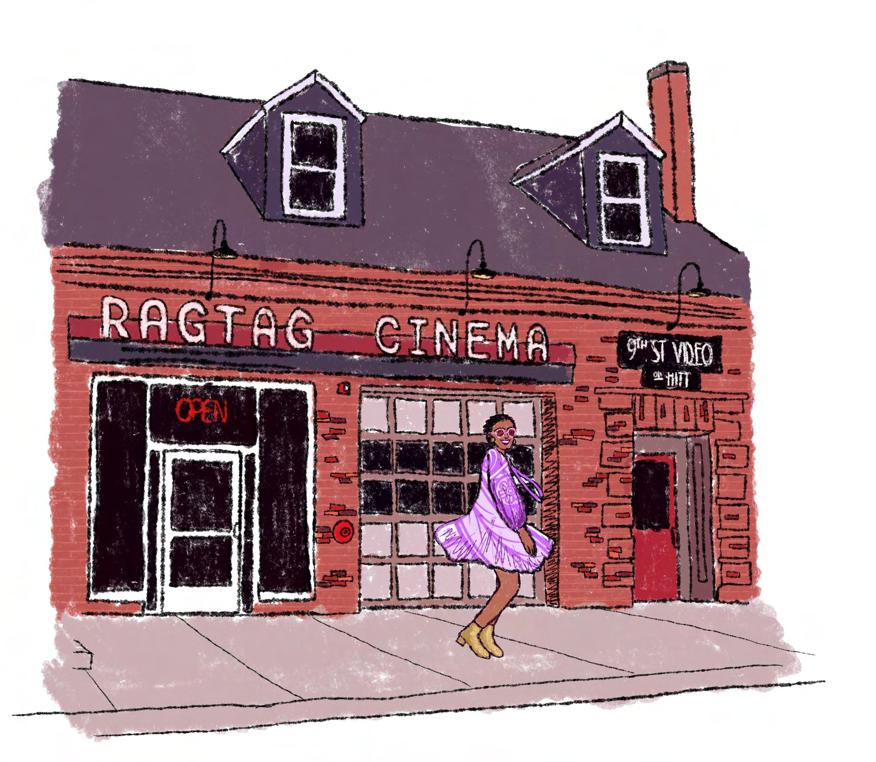
were prepared. You got tickets the moment they went on sale. A carnival of distractions inside begs you to spend the miniscule amount of time you have left on arcade games, but you’re set on satisfying your munchies with a blue raspberry ICEE and a bucket of mouth-watering, buttery popcorn.
Now, your reclining seat awaits. Once the trailers for upcoming movies play, the spectacle is finally here. Get hyped, or get out.
Location: 2800 Goodwin Pointe Drive
Ticket prices: $6.79 twilight; $7.69 child; $8.65 matinee; $8.59 senior; $10.79 evening; $15.38 RPX 2D, $16.38 3D
Programming: mainstream, blockbusters, indies
Number of screens: 14
It’s Thursday, the night of the summer megahit’s premiere. You’ve seen the teasers, the trailers, the ads, the TV spots, and even the admittedly unbearable guest appearances hyping this on “The Tonight Show Starring Jimmy Fallon.” With the best seat reserved through your phone, you stroll up to the Regal box office.
You glide past scores of eager fans trying to get in at the last minute; you
Capacity: 2,250 total
Special amenities: assigned seating, RPX premium large format screen, arcade, reserved spaces for parties, Fathom Events special screenings

Goodrich Quality Theaters Forum 8
It’s the weekend, and the kids are jumping up and down, no longer able to control their excitement to see their favorite character on screen. With your rewards card the tykes get in for free,
so all that’s left to worry about is navigating the enticing display of the concession stand.
Foreseeing the inevitable uncontrolled reactions of the little ones, you prep them by saying, “You can get one candy and soda, but only if you calm down.” You make sure the big tub of popcorn and matching Pepsi and Sierra Mist are safely secure in your arms while the kids struggle to open their SweeTARTS and M&Ms.
Right around the corner lies your final destination: an hour and a half of cartoonish enjoyment for the whole family. Securing your family’s place in the coveted front row, the room darkens for the brightly colored extravaganza the kids have been anticipating. The distraction you have been yearning for is finally here.
Location: 1209 Forum Katy Parkway
Ticket prices: $6.75 child; $8.25 matinee; $8.25 senior; $8.50 student; $10 evening
Programming: mainstream, blockbusters
Number of screens: 8
Capacity: 1,900 total
Special amenities: DBOX immersive experience, reserved spaces for parties, Morning Movies for Kids, Flashback Cinema, Fathom Events special screenings
If last year’s Hereditary didn’t terrify you enough, you’re in luck! Horror connoisseur Ari Aster is back with Midsommar, his ultra-creepy second feature. When a young couple travels to Sweden for what they think is a bright and airy midsummer festival, they stumble into a horrific competition with some major cult vibes.
Release Date: July 3
Director: Ari Aster
The first return to Marvel since April’s Avengers: Endgame is Tom Holland’s next jaunt as Spider-Man. Peter Parker journeys to Europe on a school trip, and he finds himself recruited by Nick Fury to deal with an international threat: the Elementals.
It’s a star-studded summer, both on the big screen and on streaming services. These titles are coming soon to a theater or laptop near you.
BY ABBY MONTEIL AND LIBBY MOELLEREntertainment-wise, this summer has already been a doozy: Game of Thrones is finished, Keanu Reeves is the internet’s boyfriend and we’re all about to spend more than three hours watching the rerelease of Avengers: Endgame Vox compiled a guide to help you stay on top of what the rest of the summer has to offer.

Stranger Things season 3
It’s the summer of 1985 in Hawkins, Indiana, and the Stranger Things kids are growing up. But before they can enjoy their vacation, there’s the small matter of dealing with the monstrous “Mind Flayer.” The creature makes its way back to town after Eleven (Millie Bobby Brown) banished it back to the Upside Down at the end of season two. When to watch: July 4
Where to watch: Netflix
Veronica Mars season 4
Everyone’s favorite former teen detective, Veronica Mars (Kristen Bell), finds a new home on Hulu, where she spends her time investigating the murders of spring breakers in the show’s fictional town of Neptune, Calif. Good thing that even though it’s more than a decade later, she’s still got her taser.
When to watch: July 26
Where to watch: Hulu
Four Weddings and a Funeral season 1
Adapted from the 1994 film of the same name, Mindy Kaling’s Four Weddings and a Funeral miniseries will follow the comedic misadventures of the new, millennial characters’ experiences with love across the titular five events. Nathalie Emmanuel (Game of Thrones) and Brandon Mychal Smith star.
When to watch: July 31
Where to watch: Hulu
Release Date: July 2
Director: Jon Watts
It’s the summer of Disney remakes, apparently. Another beloved tale returns to the big screen, this time with a brand new cast of celebrity voices to bring the inhabitants of Pride Rock to life.
Release Date: July 19
Director: Jon Favreau
Perhaps the most stacked cast of any summer blockbuster, Once Upon a Time in Hollywood is Tarantino’s first feature since 2015’s The Hateful Eight. The film is an ode to Hollywood’s waning golden age in 1969.
Release Date: July 26
Director: Quentin Tarantino
Based on the haunting series of children’s stories, Scary Stories to Tell in the Dark will wrap up the summer with an array of creepy tales on screen. Oscar-winner Guillermo del Toro is billed as a co-writer for the film, which follows a group of teens in the town of Mill Valley who are plagued by super-spooky happenings.
Release Date: August 9
Director: André Øvredal
The Blue Note and “We Always Swing” Jazz Series explain the fine art of contracting artists.


 BY JOSEPH HERNANDEZ
BY JOSEPH HERNANDEZ
Any night of the week, there’s likely a performance happening somewhere in Columbia, but bringing these acts to the city is easier said than done. Relationships and timing have to be perfect for both the venue and the artist. Vox caught up with The Blue Note and the “We Always Swing” Jazz Series to find out how they convince performers a stop in CoMo is worth their while.
The Blue Note
As the lead talent buyer for The Blue Note and Rose Music Hall, Pat Kay says bringing performers to Columbia isn’t like ordering from McDonald’s, where everything that’s on the menu is available 24 hours a day. It’s a process that can take months.
In a perfect world, Kay’s job would be as simple as contacting an artist’s agent, letting them know the venue is
interested and eventually agreeing on a show date. But it often proves more difficult than that.
“You reach out to them, and there doesn’t seem to be any interest,” he says. “After following up for months and months and months, you finally get a hold on the calendar. You send them an offer; they don’t reply, and you follow up and follow up, and finally they tell you they want to hold a different date.”
It could be months before they talk about a price, at which point the artist might be over-budget anyway. Kay says these are the most frustrating interactions because they’re ultimately a waste of time.

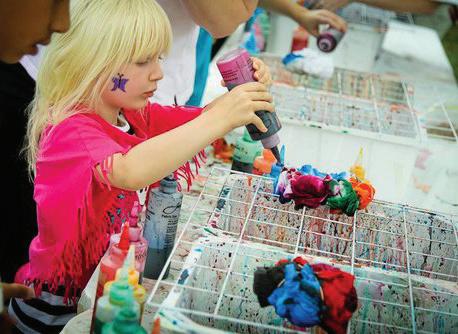
Things are easier if an artist is in the price range for either of Kay’s venues. Some artists claim priority on a day, which limits dates for other acts Kay is negotiating with. But the act could try to rework its deal once it has the nego-

tiation power, pushing Kay to pay more or drop the agreement altogether. He then has to scramble to try to pencil in one of the other shows he turned away.
”We Always Swing” Jazz Series
“We Always Swing” Jazz Series also has its fair share of obstacles. Because the nonprofit does not have its own performance space, a venue is never guaranteed, assistant director Josh Chittum says. That makes booking a challenge. The Jazz Series has to make sure there’s an appropriate spot available on a given date for the incoming act.
Chittum says most of the Jazz Series’ shows are the product of routing dates, the days when an artist or group is traveling near Columbia. “They’re playing in Chicago and then two to three days later, they’re playing in Tulsa, so they’ve got to come through here anyway,” he says. The act’s travel proximity and availability makes the date more affordable, something Chittum says he has to be cognizant of as part of a nonprofit in a
small market. Another factor the Jazz Series considers is avoiding overlap with busy CoMo weekends such as True/False Film Fest and Roots N Blues N BBQ.

The Jazz Series books more than 16 months in advance, using the summer months to finalize who’s coming to town and create promotional material for those artists. As the Jazz Series puts together its upcoming season’s events, it focuses on acts that best fit its mission, which is to “present, promote, preserve and celebrate the great American art form known as ‘Jazz.’”
Regardless of genre or venue size, the task of booking talent isn’t glamorous. For both Chittum and Kay, it’s a lot of staring at a computer while deep in negotiations. But while the challenges seem frequent, that’s only because they’re more likely to stick in Kay’s mind. For every loss, he’ll have about three or four wins. Eventually, all the hoops are jumped through, dates are booked, tickets are sold and crowds get what they came for.
For MU alumnus Bryson Bruce, playing the role of Marquis de Lafayette and Thomas Jefferson in Hamilton is a testament to finding balance.
BY KATHERINE HERRICKActor Bryson Bruce is setting a new precedent for post-graduate goals: The 2014 MU graduate now performs with the touring cast of Lin-Manuel Miranda’s musical Hamilton as Marquis de Lafayette and Thomas Jefferson. He’s been on tour for about 11 months, and he’s recently signed on to continue performing for another year. But before he made it to where he is now, he realized his passion for acting right here in Columbia.

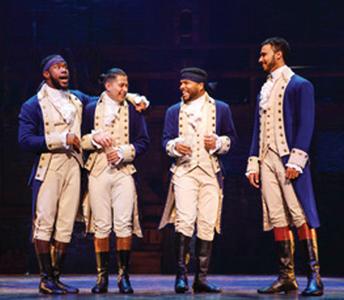
“I started dabbling in theater as a sophomore, and the first show I did (I played) Laertes in Hamlet ,” Bruce says. “When I auditioned for the show, I was like, ‘OK, I know I’m a newcomer, but I know my way around the theater

enough, so I’m hoping this school will have me,’ and I was welcomed with open arms.”
Bruce explores his role in Hamilton and offers advice for future actors.
How did you land a role in Hamilton?
I got an agent through word of mouth after popping into an acting-throughsong class. The teacher said, “I have an agent, would you like to be represented?” I said yes, and then that representation got me to a couple of little jobs here and there. Then I had a dry spell where I was thinking, OK, I just got back from Rent — the 20th-anniversary tour of Rent — and that was amazing and fun. I started as a swing, and then I went into
the ensemble halfway through. Then I came back to New York and thought, was that it? Was that my high? Should I just cherish that for the rest of my life? What if this pipe dream is over? I was stressing and taking people out to lunch and asking, how did you get your job in this office? Do they need an assistant? And then I got an email saying Hamilton is looking for people; would you like to go in for it? And I thought, of course, I don’t even know why this is a question. And by some luck, they liked me.
What’s it like playing Thomas Jefferson? He’s great. The way he’s played is very freeing. He really follows all of his impulses, and he’s a shark, but he’s also a very likable person. It’s just fun to be ridiculous a little bit on stage and unapologetic.
What have you learned in Hamilton that you didn’t learn from acting in school?
I’m learning more and more how to take care of myself on the day-to-day. With Hamilton, it’s eight shows a week, twice on Saturdays and Sundays, so it is a lot on the body. You have to know how to give the same amount of energy or same amount of clarity (for each show), but also support it in the right way so you can actually get through eight shows. It’s a testament to self control.
What’s the most important thing for audience members to take away from the show?
Hamilton shows how complicated starting a nation can be, and it shows how it was just these young spirits that were just like, “Let’s do this thing. We don’t know the right answers and the wrong answers, but we feel the need to do this, and we’re all banded together.” To see that excitement, to see the risk people took to leave their families and do this, to watch all of these characters go through something so new and come out the other side knowing it’s going to eventually become the nation we know today, it’s humbling. Every decision set a new precedent, and everything was so new, but it also needed to happen. That stuff is just so exciting to me.
Book by book, a rise in LGBTQ characters and conflicts is making YA literature more inclusive.
 BY MORGAN SPEARS
BY MORGAN SPEARS
For young adults struggling with their sexuality, having a refuge is essential, and the mainstream literary world is finally meeting that need. Central characters in young adult novels who identify as LGBTQ are becoming more commonplace.
“I think that is a stage in life where people need to be seen and feel visible,” Skylark Bookshop manager Carrie Koeple says. “And if you’re not on the shelves, you don’t exist.”
Find these titles at Skylark and the Daniel Boone Regional Library.

Leah and the Offbeat
by Becky AlbertalliThe 2018 sequel to Simon vs. the Homo Sapiens Agenda is about Simon’s best friend Leah Burke, a drummer who’s struggling with high school drama while secretly identifying as bisexual.
The Summer of Jordi Perez (And the Best Burger in Los Angeles)




 by Amy Spalding
by Amy Spalding
Abby Ives lands a fashion internship but
starts a taboo workplace relationship with the other intern and her competitor for a full-time job, Jordi. While trying to land the job, she gets involved in a mission to try every burger in Los Angeles with her new friend Jax.


This fantasy novel revolves around Lei, a member of the lowest caste in the land of Ikhara, who is chosen to serve the king. While training, she falls in love with another girl selected for the same duty. An important note: This book has moments of violence and sexual abuse.
Niru, a young boy who comes from a family of Nigerian immigrants, is gay, which goes against the beliefs of his conservative parents. The author follows Niru’s struggle to figure out how he can be himself in a world where there are so many expectations put upon him.



Preserving our historical record is becoming a new challenge in the digital age.
On July 20, 1969, families clamored around radios and television sets while they strained their ears and eyes to make out the grainy picture of the man on the moon. Listening and watching closely, the American public heard astronaut Neil Armstrong declare his famous line, “That’s one
ment and archive this progress in a way that withstands the test of time?
Rachel Harper, the associate director of the MU Honors College, has concerns about the digital age. “We are in a strange transitional period,” she says. Harper has worked in many archives, including searching through a huge collection in the Wisconsin Historical Society to find letters by film producer Elia Kazan for former MU professor Al Devlin’s The Selected Letters of Elia Kazan
Landing men on the moon was an iconic moment, not only for the U.S. but also for the entire world. However, even monumental projects can quickly come to a close, which happened shortly after Congress pulled the funding for any further research on the moon in 1977. The study Neil Armstrong and fellow astronaut Buzz Aldrin began about how heat escaped from the moon’s surface was left unfinished, and most of the data collected went undocumented. In recent years, there has been a new interest in locating the data to reveal whether the moon landing added to the negative impact of mankind’s ecological footprint on Earth.
But here’s the problem: Finding that data could take years, and by that time, could we still read it? The data was recorded on magnetic tapes that are aging fast, and even if the tapes are still in decent condition, the archaic machines that read them might
not work anymore. Today, we’re looking at a race against the clock as scientists scramble to collect the missing data before it’s too late.
Achievements like the moon landing demonstrate how innovative we can be, but they also show how uninformed we can be. Human technological advancement has skyrocketed during different points in history, such
James Downey cleans and conserves books for clients at his house in Columbia. “That’s a real piece of history there,” Downey says. “It’s pretty cool to have a chance to work on something like that.”
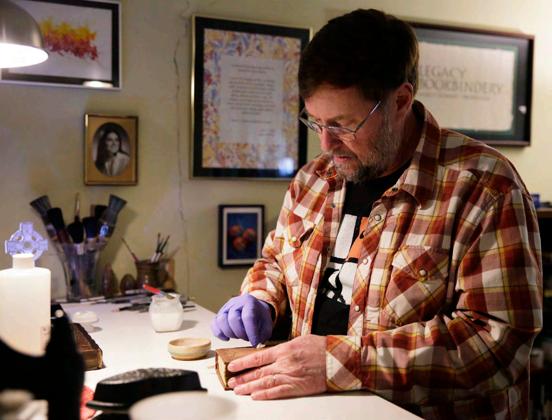
as the agricultural revolution, which eventually landed us in a world where we can put people on the moon. But in the midst of all this technological progress, we might be missing a critical takeaway: If we continue to create new machines that rapidly make previous iterations obsolete and inoperative, we risk losing massive chunks of our history. How do we docu -
“To be able to have access to his letters, to see his handwriting, just gives you that immediate sense of history,” Harper says. “Nowadays, so much of that information happens on email. There is a worry I have, and that probably a lot of other people have, that we are going to lose that kind of connection to the past as we become this increasing digital age. Where are the archives of the future?”
You’ve likely heard that once something is on the internet, anyone can find it, and it lasts forever. However, some online items, such as emails, are now viewed as private information. “You would need someone after a famous writer’s death to do what?” Harper asks. “Download all that person’s emails? Save them? I’m just not sure how any of that will work going forward.”
The preservation of documents and artifacts isn’t a new concern — it’s not like our ancestors lived in some idealized past where they had a better understanding of the value of history. The real concern is figuring out how to
small step for man, one giant leap for mankind,” as he stepped out of Apollo 11 onto the surface of the moon.
The Special Collections department at MU’s Ellis Library commissioned James Downey to restore a 600-year-old personal Bible. The Bible was written in church Latin and conservation work had been done on it in the past, more than 100 years ago.

James Downey prepares a strip of fabric for application to a book he is restoring. Most of the tools Downey used were tools that “someone from the past” would recognize.
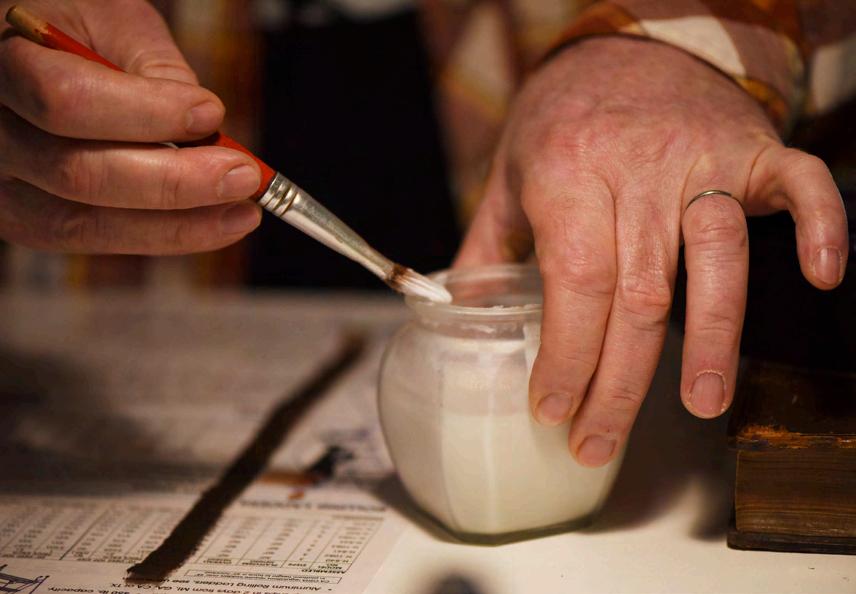
keep up with the changes in technology to preserve the historical record we’re making right now. It takes an incredible amount of skill to be able to restore and preserve old scraps of paper we find, but at least we can recognize when we’ve discovered important information. Hundreds of years from now, people might not have the ability or even know how to access information stored on devices like the original iPhone.
At MU, the curators in the Special Collections section of Ellis Library take preservation seriously. Their job is to find and add ancient artifacts to the collection and make sure every item is properly cared for. Special Collections currently holds about 100,000 items, some dating back to 2000 B.C., and more than 40,000 of which are classified as rare.

These artifacts, packed up in protective boxes and stored in dark, climate-controlled rooms, range from ancient clay tablets to 20th-century comic books. You can actually touch fragile artifacts, such as a book signed in pencil by Pablo Picasso, and see the difference between the hair side and the flesh side of a vellum page, which is prepared animal skin, typically calfskin, used for writing.
You can see people’s relationships with these texts — the page corners that have been folded down, handwritten notes scribbled in margins or tears on the spines from getting pulled off a shelf. You can even find places the printer had to repair holes in the leather from unhealed

mosquito bites that ripped open as the animal skin was stretched. These details that give us a physical connection to people who lived before us are what we risk losing in a completely digital age.
Kelli Hansen, the interim head librarian of Special Collections, says the curators are actively trying to digitize artifacts in order for people to
see them all over the world, but electronic copies don’t compare to the original.
“Libraries preserve human history and human thought, and it’s important to see things in the original formats to truly understand their impact and influence,” Hansen says. “As you’re reading things in paperback or on Kindles, it’s great, but at the same time, remember for the longest time, texts were these embodied things. They were artifacts, and they still are. And artifacts have history; they have lives. In order to remember them, to uncover some of the context, we have to make sure we preserve things.”
Acommon fear among historians and preservationists is generation loss, which is the loss of quality between subsequent copies of data. To avoid this, it is important to correctly preserve original artifacts.
James Downey, a local book conservator, has worked with Special Collections for 26 years repairing artifacts. He runs a private business, Legacy

Bookbindery, out of his white 136-year-old Victorian farmhouse. His workspace is lined with old-fashioned machinery. The sharp arm of the board sheer sits wide open, waiting to trim pieces of book board; cast-iron bookbinders “nip” newly glued covers into place; leather dyes in small capsules are gathered in boxes; spools of thread spill off the shelves; huge metal drawers hold stacks of tissue paper for repairs; and antique irons scatter the room to be reused as paperweights once the restoration process has begun.
“For the most part, I’m not using real fancy equipment of any sort,” Downey says. “What I use would be recognizable to any bookbinder from the 15th century.”
Although Downey’s workspace can make us feel like we’ve traveled back in time, some of the equipment he uses is rather high-tech. For a few of his projects, he uses a home laser cutter to repair items for clients, which shows how improvements in technology can be helpful even in a field focused on preserving
the past. But even though advancements can have positive impacts, we don’t always need to push to replace old methods of preservation.
“As it turns out, a lot of times people don’t realize paper is actually one of the better archival solutions for preserving history, preserving information,” Downey says. “We have a bias in this day and age that digital media, or stuff that’s available online, is perfect. It’s good for saving and sharing information, but it’s not necessarily good for preserving it.”
Downey says people get confused by this idea of “saving history” when we think about it in terms of just saving information. Instead, he believes it’s imperative to save the artifacts of history. “It’s more important to me to save the actual books and documents than it is to just save the information that’s in them,” he says. “An image is not the same thing as the artifact. And unless you have a way to properly care for and preserve those things, they will be lost.”
James Downey unrolls a Torah from around1470 on a table in his house. As a book conservationist, Downey runs Legacy Bookbindery, a local company that restores artifacts such as this nearly 550-year-old Torah, which he says is one five known in the world.“...REMEMBER FOR THE LONGEST TIME, TEXTS WERE THESE EMBODIED THINGS. THEY WERE ARTIFACTS, AND THEY STILL ARE. AND ARTIFACTS HAVE HISTORY; THEY HAVE LIVES. IN ORDER TO REMEMBER THEM, TO UNCOVER SOME OF THE CONTEXT, WE HAVE TO MAKE SURE WE PRESERVE THINGS.”

 Justin Skouby stands watch for debris at the bow of a boat carrying more than 20 sandbags on May 22. The boat headed toward a levee in Wilton that needed refortification to prevent the Missouri River from flooding the residents’ farmland.
Justin Skouby stands watch for debris at the bow of a boat carrying more than 20 sandbags on May 22. The boat headed toward a levee in Wilton that needed refortification to prevent the Missouri River from flooding the residents’ farmland.
Moments from the banks of the Missouri, Mississippi and Current rivers

 By Antranik Tavitian
By Antranik Tavitian
While growing up in Los Angeles, the closest thing I knew to a river was approximately two blocks from my home. It was a shallow stream that ran through a deep concrete gorge, and it was generously named the Los Angeles River. I gasped when I saw the size of the Missouri River for the first time while driving over the bridge into Hermann. Pink sunset sky reflected off the metallic blue water; it was one of the most visceral experiences I’d had since moving to Missouri.
My friend told me about some of the river towns around Columbia and their so-called “river rats.” My draw to the river’s beauty guided me toward wanting to meet people who live by it, who base their livelihood around it and who, in some cases, have been there for generations. This project is an exploration of their way of life.
The culmination of images in this river life essay come from the banks of three Missouri rivers and emphasize how similar lifestyles crop up on different bodies of water. The selection and movement of the images has been crafted with the hope of inspiring feelings of motion and timelessness — feelings found while spending time along the rivers’ edges.



Bugs fly in swarms in the light of an April sunset above the Mississippi River on Highway 51 near Perryville.



Anticipating a storm, 10-year-old Jackson Skouby, center, loads dirt into sandbags with family, friends and other volunteers in Wilton. “I could follow a creek back to my house,” Jackson says. Without sandbag barriers, the water from the Missouri River could flood his home.
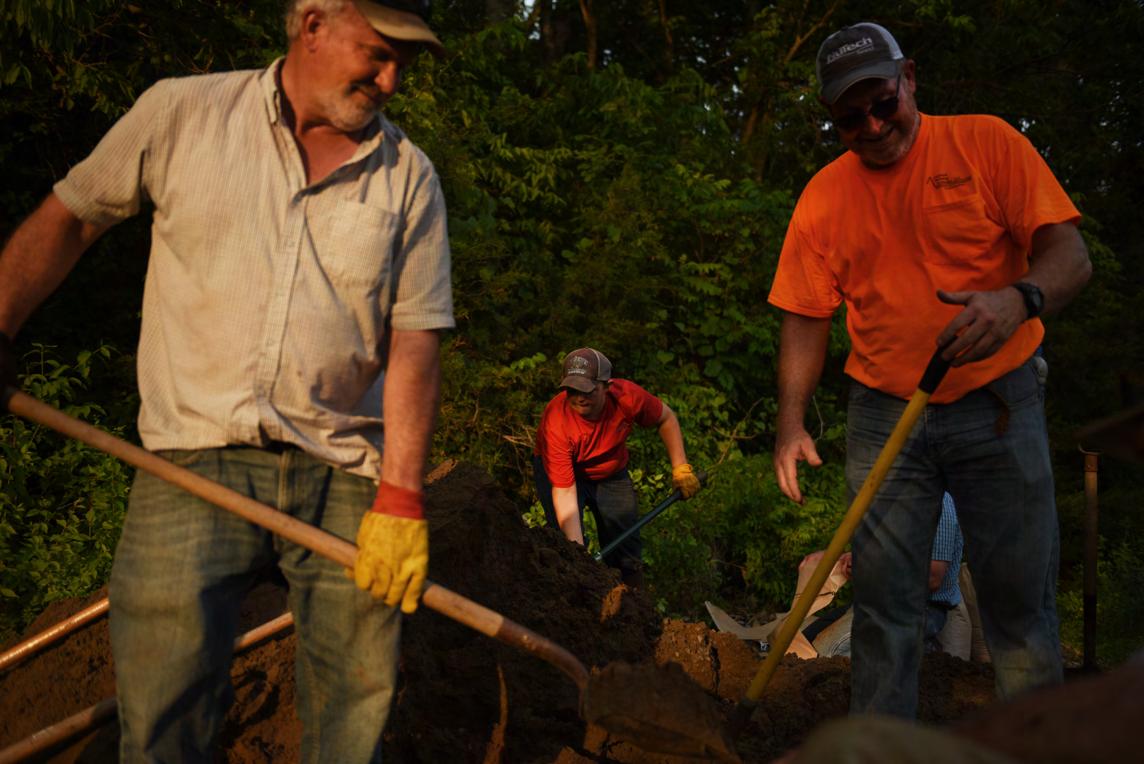
Peony petals float in a Wilton creek. Mia Heyen and Rylie Skouby had started throwing the petals into the water after giving one of the flowers to Rylie’s mother, Danielle Skouby.


A memorial stands on the east side of Highway 51 near the Mississippi River outside of Perryville.

Miley West, 8, and Dusty West, 5, hold on to their mother, Shanna West, while they wait for ice cream on one of the first days that Van Buren’s Jolly Cone Drive-In was open for the spring. Approximately 1,000 people live in the southeast Missouri town next to the Current River.


A turtle shell and a deer antler sit next to a backpack on the shore of the Missouri River. The backpack’s owner, Ben, who declined to give his last name, had been looking for a turtle shell to give to his girlfriend whom he met online. He regularly comes down to a spot on the river to bow fish and noodle, a term for catching catfish with his bare hands.
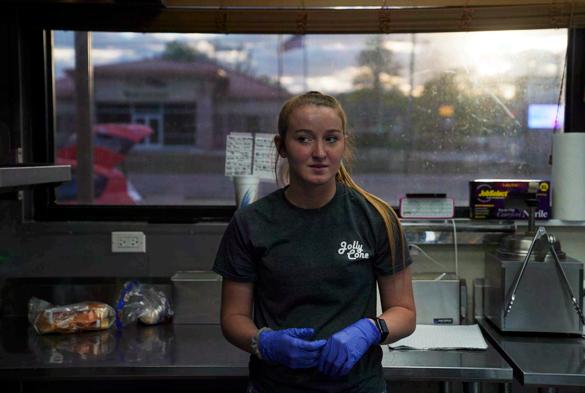


Opie Diederich, 2, plays in dirt used to fill sandbags in Wilton. Opie’s grandfather and great uncle, Robert and Stephen Diederich, rebuilt the town’s levee after the Missouri River flood of 1993 and created a levee association with farmers in the area. “Their whole livelihood is about keeping the water out of this bottom,” Eric Gies, a neighbor of the Diederichs, says. Those same levees had to be refortified during this year’s flooding.


This river life photo essay was crafted over the course of several months. Photographer Antranik Tavitian explored and re-explored the meaning of the photographs in relation to his experiences near a river and the experiences of the people he featured, ultimately creating a visual representation of what it means to both live and, more simply, be along a river’s banks.
Waves from the Mississippi River crash against a riverside road near Perryville. The water level in this photo, taken on April 19, was recorded to be 35.60 feet. During the flood of 1993, the river crested at 49.74 feet, according to the National Weather Service. As of June 21, the river had risen to 41.40 feet, but National Weather Service predictions were showing a decline.
















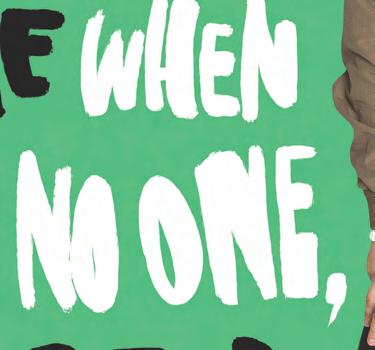
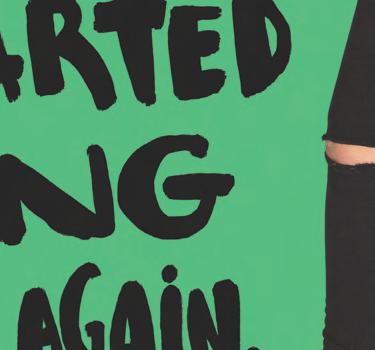

Canterbury Hill Winery’s atmosphere and menu is taking it to new heights.

 BY MAURICIO VENEGAS
BY MAURICIO VENEGAS
After a revamp and reopening a few years ago, the Canterbury Hill Winery and Restaurant, atop a bluff in Holts Summit, is enjoying a renaissance.
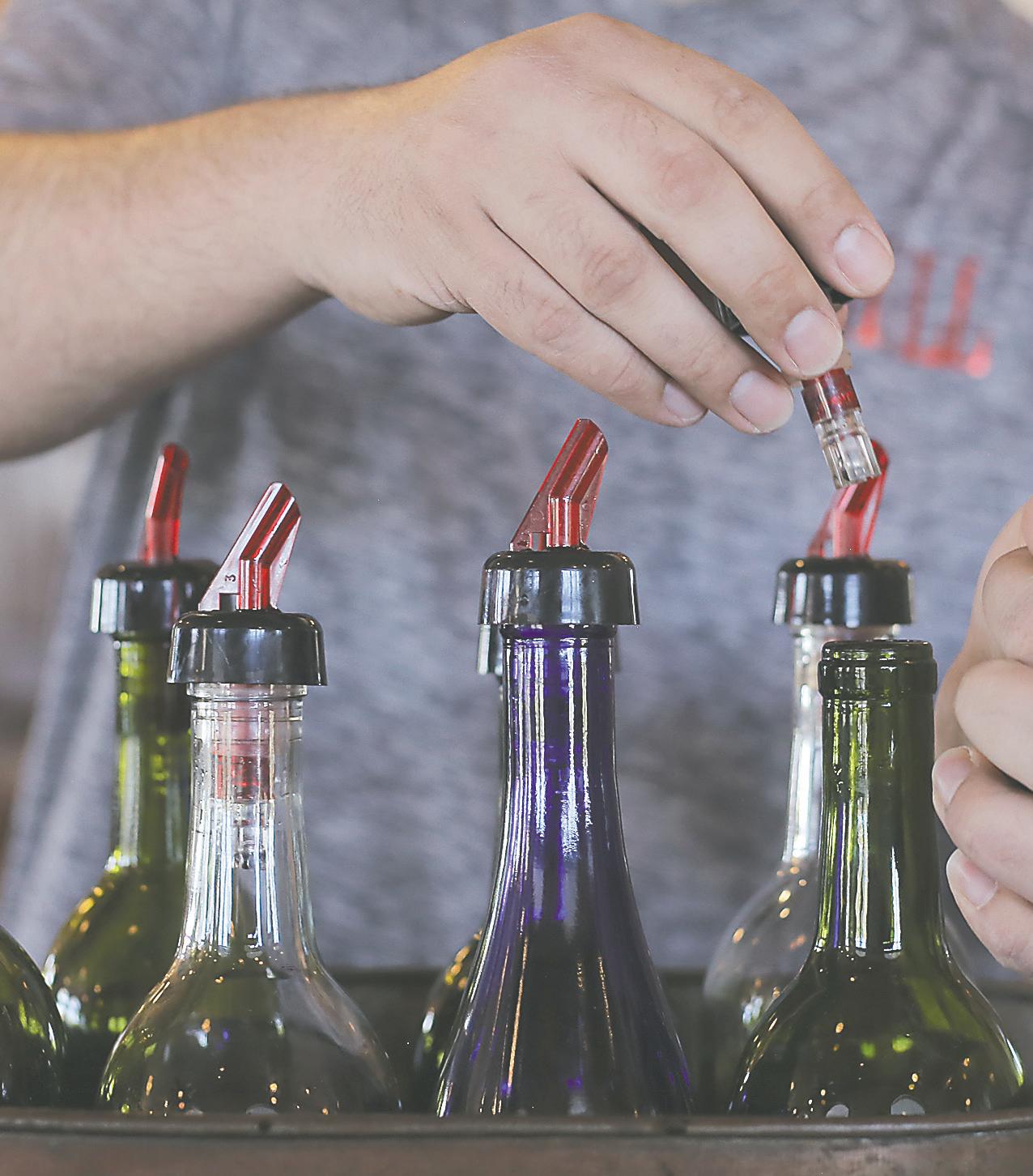
The establishment, formerly known as Summit Lake Winery, has been open since 2002, but owner D.J. Drury renamed the location Canterbury Hill in 2013. The idea that spurred the change was to create an old English or “royal experience.”
“The winery plays up its medieval theme with castle-inspired décor and wines with names such as Excalibur and Medieval Mist,” Rose Hansen wrote for Feast Magazine in April 2017.
In the 2013 revamp, the winery and restaurant steered away from making the wine sold to customers, but there are plans to get back into production in the coming years. The purpose of the temporary move away from production is to focus on establishing the winery and restaurant as a destination for good food, says Shane Mikles, Canterbury Hill’s head chef.
The food is mostly Americana, Mikles says, but with an emphasis on quality. Some popular selections from the menu include the famous spinach and artichoke dip, served with tortilla chips, carrots and celery sticks, and a cranberry pecan salad, which also includes bacon bits and blue cheese crumbles.
As for the winery part, Les Bourgeois Vineyards in Rocheport currently provides the 13 different wines available on the menu. However, Canterbury Hill also creates its own cocktails, including the Berry Good Sangria and Canterbury Cosmo, and liquor-infused slushies such as the Red Dragon, which is a “magic blend of sweet red wine, rum, peach schnapps, strawberry puree, orange juice, pineapple juice, and Sierra Mist,” according to the menu.
Canterbury Hill was Drury’s introduction into the restaurant world, but that didn’t stop him. He opened Fulton’s The Copper Mine Restaurant in 2016.
Mikles, who’s worked in restaurants for 24 years, says Drury’s unconventional approach and “all-in” attitude to accomplishing goals are refreshing.
“He does things differently in comparison to other restaurant owners I know, which makes things fun,” Mikles says.
“It’s actually taught me new skills, and it’s helped me to think outside the box.”
Drury encourages staff to treat visitors as friendly neighbors instead of as individuals who they simply want to
The Concord grape vines that grow in sprawling rows down a gentle slope alongside Canterbury Hill Winery begin to show signs of budding in April. Currently, the Holts Summit winery outsources its wine, but it is building a wine cellar and barrel room to resume production.
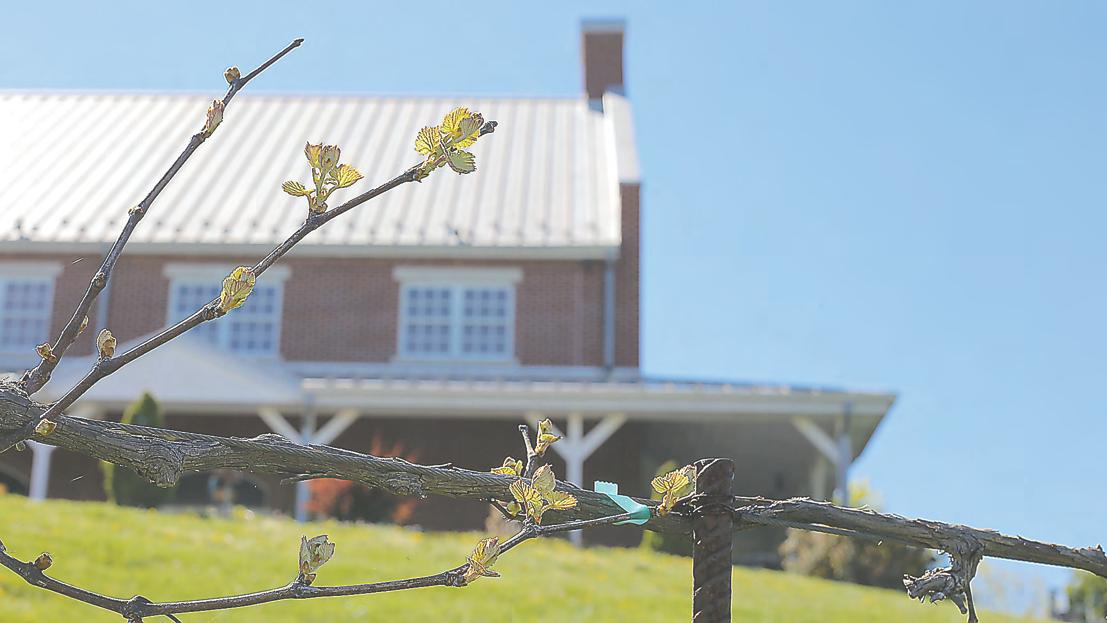
come in, pay, and get out, Mikles says.
“It took some time, but we have established a group of people from town that come in regularly,” says bartender Braden Handke, who’s worked at Canterbury Hill for six years. “Not only that, but we also get lots of traffic from travelers headed down to the lake or from bikers enjoying a nice day on the Katy Trail.”
Canterbury Hill has live music Friday and Saturday nights in the summer, as well as more interactive experiences such as dueling piano shows, murder-mystery shows and bottle-your-ownwine events that are held throughout the year.
From its spot on the bluff, guests at the winery can enjoy views for miles, including the Missouri River and the state capitol building in nearby Jefferson City. In 2017, nearly 700 people sat on the patio to watch the Aug. 21 total eclipse, according to KRCG 13.
“We definitely have one of the best outdoor venues in central Missouri,” Handke says. “People come here for the food, wine and the views, and they love it. I hope it continues to be like that.”
The minds behind Chris McD’s and CC’s City Broiler explain the ins and outs of ordering steaks.
BY JESSICA DUFFIELDIt’s easy to be intimidated stepping into a steakhouse. You might pray your dining experience isn’t as threatening as all the gleaming cutlery. A quick glance at the menu leaves you with more questions than answers: Why does a filet cost more than a sirloin? What’s better, a Kansas City strip or a rib-eye? Most importantly, what do you actually want to eat?
Chris McDonnell, chef and owner of Chris McD’s, and Dustin Norem, general manager of CC’s City Broiler, solve this debacle by taking us, steak by steak, through a few offerings at their beloved restaurants.
Chris McD’s
The selection at Chris McD’s runs the gamut, including filets, sirloins, rib-eyes and New York strip steaks. McDonnell says the filet stands out for its buttery tenderness and super-lean cut. You won’t get stuck chewing a hunk of fat when you’re eating a filet.
McDonnell says that a Kansas City strip comes from a different cut of the cow than a sirloin, and it features a nice, satisfying chew. The rib-eye is the richest of the cuts. Its generous helping of fat works its way into the meat while the steak cooks, making it an extra flavorful pick.

The sirloin cut, on the other hand, isn’t as tender as a filet, but it’s made all the better for its marbling, the streaks of fat in the meat. That juicy flavor is where much of the taste comes from. Steakhouse owners stake their businesses on good marbling, usually inspecting individual cuts for their quality.



Chris McD’s steaks are labeled “Certified Angus Beef.” To earn this prestigious brand name, the meat must be “Angus-influenced,” referring to the Black Angus cattle breed, according to the Certified Angus Beef LLC. Next, the beef must pass 10 quality standards divided into three categories: marbling and maturity, consistent sizing, and quality appearance and tenderness. When it comes to pairing steaks and sauces, “a good steak doesn’t need a lot of sauce,” McDonnell says. He serves the filets with the Chris McD’s Gorgonzola cream sauce, a smooth and nutty offering with asparagus. He says it’s unorthodox to spoon white sauce rather than brown sauce over steak, but he thinks the sharp Gorgonzola pairs well with the filet.
$6–41, 446-6237, 1400 Forum Blvd #38, Tues.–Sat., 4:30–10 p.m.


meat as Chris McD’s, CC’s City Broiler also offers Akaushi, a heart-healthy beef cut from the Japanese-American breed of the same name. Dustin Norem says this steak is a favorite at CC’s, but its tried-and-true hit is the filet. “The filet is the most popular cut here,” Norem says. “It is what we’re known for.”
Steaks are cooked rare, medium-rare, medium, medium-well or well. CC’s also offers “Pittsburgh rare,” where the steak is seared outside and cold inside.
Norem says cook time and temperature are about personal preference, but the cut does affect how long a steak should sizzle. A filet is best suited for medium — with a hot pink center — or rarer. But with a sirloin or rib-eye, don’t be afraid to order it medium-rare. Excessive cooking can suck up all the savory juices.
Norem believes that the menu shouldn’t dictate what steaks can be paired with which sauces and sides. Instead, he lets diners pick. One might choose a vegetable; another might like their beef plain. Waiters and waitresses at CC’s are merely instructed to lead patrons in the right direction.
$4.95–49.95, 445-7772, 1401 Forum Blvd Sun.–Sat., 5–10 p.m.

We’ve combed through the best recipes we could find that feature your favorite natural sweetener: honey. Your perfect meal awaits.
BY MEG DONOHUEThere’s a lot of hype about the benefits of local honey. Honey is much healthier than refined sugar, which is just “empty calories and carbohydrates,” says Nick Kauffman, the owner of the Honeysuckle Acres farm. Honey is also a carbohydrate, but he says it has beneficial enzymes that aid in digestion and health.
Health benefits aside, honey is the perfect natural sweetener — and the time is ripe to pick some up from nearby farmers. Find locally made honey at places such as the Columbia Farmers’ Market, Coming Home and Lucky’s Market.
We’ve tested three recipes incorporating the sticky staple for you to try at home. Best of all? There’s no beekeeping required.
The honey avocado dressing from the Oh, Sweet Basil blog is quick, easy and delicious. Drizzle the dressing over your favorite salad, or enjoy it as a sandwich spread or dipping sauce.
Honey avocado dressing recipe

½ avocado
Juice from one lemon
2 teaspoons minced garlic (or garlic powder, but fresh garlic will create a much sharper flavor)
2 tablespoons local honey
2 tablespoons mayonnaise (or vegan mayonnaise)
Pinch of salt
In a blender, combine all ingredients, and blend until creamy.
These old fashioned soft honey cookies from the Semisweet Sisters blog are the perfect summer afternoon or rainy evening dessert to make with the kids. Plus, you can sit and bask in the sweet scent of your kitchen after baking these saccharine confections.
Honey cookie recipe

1 cup softened butter
1 cup brown sugar
2 eggs
1/3 cup local honey
1 teaspoon vanilla extract
3 1/2 cups all-purpose flour
1 1/2 teaspoons baking soda
Heat the oven to 350 F. In a bowl, combine butter and sugar. Add eggs, vanilla and honey. Mix in flour and baking soda. Stir well. Use a spoon to drop dough onto greased cookie sheets. Bake 10–12 minutes, or until golden.
What’s more classic than bread and butter? This honey beer bread and honey butter recipe from the Cook Nourish Bliss blog takes tradition and adds a

twist. Although there’s not a definitive best brew for beer bread, the general consensus among bloggers and food gurus is that lagers and ales work best.
Honey beer bread recipe
2 cups all-purpose flour
1 cup bread flour (or substitute all-purpose flour)

1 tablespoon sugar
1 tablespoon baking powder
1 teaspoon sea salt
3 tablespoons local honey
12 ounces beer
4 tablespoons unsalted butter, melted and cooled
Heat the oven to 350 F. In a bowl, whisk together flour, sugar, baking powder and salt. Mix in honey and beer until just combined. Pour dough into a greased loaf tin. Pour melted butter over top of the batter. Bake 50–60 minutes, or until the loaf is golden brown. Cool for 15–20 minutes.
Honey butter recipe

½ cup unsalted butter at room temperature
1 tablespoon local honey
¼ teaspoon sea salt
In a small bowl, mix butter, honey and salt together. Adjust proportions of honey and salt to taste. Smear across bread as it’s cooling.


Thursday, July 11, 2019 | 7 p.m.

Stephens Lake Park, 100 Old Hwy 63 (Beach entrance to park)
Columbia Community Band is one of Midwest’s premier symphonic concert bands. Founded in 1981, the band is made entirely of volunteers. RJ’s Italian Ice will be vending.




Sponsored By:
Presented By:


Forecasters explain their process and hidden secrets for making weather predictions.


 BY ELIZABETH UNDERWOOD
BY ELIZABETH UNDERWOOD
Living in the Midwest, everyone has those days where it seems as if the weather is never accurately predicted. Instead of sunshine, it literally rains on your parade. But how is the weather even forecasted? And why does it seem like the weather is an unpredictable entity?
People receive most of their weather information from a weather forecaster, also known as a meteorologist. The process of predicting the weather, says Patrick Market, a professor and interim director of the School of Natural Resources at MU, is much like the process of going to the doctor’s office.

“You don’t just walk into the doctor’s office and that individual throws you a bottle of pills,” Market says. “I mean there has to be a lengthy question and answer period.”
This “question and answer period” consists of observations gathered from different types of sources. According to Market, these sources include reporting stations, weather balloons, airport stations, radars and satellites. He also says the five main elements a meteorologist observes are temperature, humidity, pressure, wind speed and direction.
Anthony Lupo, another professor of atmospheric science at MU, adds that part of forecasting is looking at current and past weather conditions to help predict the future.
Despite the increasing accuracy of these methods, Lupo says there’s still an element of the unknown in the weather forecasts made by meteorologists.
“There are cycles within the weather that make things easily predictable, such as day times are generally warmer than nights, winters are usually colder than summers,” Lupo says. “But after that, there’s a lot of what we call dynamic vari-
ability. And that is just natural variability within the system.”
Some of these variables include cloud formation, precipitation, and how the land, atmosphere and ocean interact.
The predictions made by meteorologists have been developing and improving along with technology. But there’s another well-known weather forecasting source that has been used since 1818: the Farmer’s Almanac
According to Peter Geiger, one of the two editors of the Farmer’s Almanac, the main difference between their
Have you ever watched the weather forecast on TV and had no clue what they were saying? Well, Vox compiled a list of 10 different weather terms that’ve been used by Missouri forecasters this year.
Jet Stream — A narrow strip of strong wind in the upper atmosphere
Zonal Flow — Air flow in a vertical circle
Cold Snap — A brief period of very cold weather
Polar Vortex — A wide area of cold, circling air expanding from the north and south poles
Flood Warning — Issued when flooding is happening or about to happen
Flash Flood — A flood occurring after around 6 hours or less of heavy rainfall
Supercell — A type of thunderstorm that could be severe
Severe Thunderstorm — A thunderstorm producing tornadoes, over 58-mph winds or quarter-sized hail
Wedge Tornado — A tornado that looks wider than the distance from the ground to cloud
Tornado Emergency — Declared when a tornado causes life-threatening conditions and is about to strike a heavily populated area
job and the meteorologists is that the almanac forecasts weather two years in advance using a specific mathematical formula created over 200 years ago. This, in turn, creates a different vocabulary and timeline for their forecasts that they have to use.
“I can’t say [it’ll] start raining at two in the afternoon and stop at midnight, so what we’re going to say is it can be heavy rain, or it can be clear,” Geiger says. “And that’s what I think is good for people who are trying to plan vacations, plan a wedding, plan something outdoors.”
With all these different sources for weather predictions, it’s hard to choose just one. According to Market, this is one of the biggest struggles people face today. He calls it “forecast shopping.”
“The real problem that we have here, in terms of the public’s perception of accuracy, is the public hasn’t decided on a single outlet,” Market says. “Forecast shopping is the worst thing you can do. It might work for cars and shoes, but it doesn’t work for your forecast.”
With the meteorological method everchanging and the Farmer’s Almanac’s method a secret, it seems like the weather will never be 100% accurately predicted. So you might as well keep an umbrella with you at all times, just in case.
We’ve tracked down everything you need to know about geocaching, the world’s largest collaborative scavenger hunt that is right in your backyard.
BY LANGSTON NEWSOMESummertime means the perfect weather is here to venture into the outdoors and explore. This season, turn your run on the Katy Trail or family hike through the Pinnacles into the ultimate quest for hidden treasure with geocaching, a global adventure for all ages.
The answer is simple: Geocaching is a scavenger hunt. The app run by Geocaching.com, the self-proclaimed largest geocaching site, lists the coordinates of over 3 million hidden containers, known as geocaches, in over 190 countries. That might sound overwhelming, but Columbia houses a litle less than 400 caches, a more reasonable feat for those just getting into the game. GPS coordinates help guide you to a general starting point. Afterward, it’s up to you to find where each item is hidden. It’s a similar concept to Pokémon Go, but instead of searching for augmented reality
creatures on your phone screen, you’re tracking down actual containers hidden in your community that range from pill bottles to gallon buckets.
The hunt began in May 2000 when GPS accuracy and reliability improved across the globe, according to Geocaching.com. GPS enthusiasts establish coordinates and create hidden maps using hand-held mapping devices. Only 75 geocaches existed when the website launched in September 2001. In 2013, the introduction of the free Geocaching app led to an increase of both users and caches because the game became more accessible. “Before, you had to have a dedicated GPS unit, which could be anywhere from $200 to $300, sometimes even more,” says Dan Hickey, a local geocacher since 2010. “So with cellphone-caching, the number of caches exploded exponentially at that point. You were finding them just about everywhere.”
Anywhere and everywhere. True geocachers try to avoid spoilers, so the only way to find out is to go explore. The geocaches are hidden with the intention of getting people outdoors and venturing about their communities. “Geocaching, like letter-boxing and orienteering, serves the purpose of getting people to explore beautiful nature areas around Columbia,” Columbia Parks and Recreation superintendent Mike Snyder says. “Anything that gets people outdoors and into nature is a good thing.” This aspect makes geocaching appealing to a wide range of people. Anyone on an excursion through Columbia’s many trails can add a challenge to a typical walk, and those seeking the thrill of finding buried treasure can find it right in their own backyards.
There are several types of caches out there, and difficulty and terrain ratings can help you find one that fits your skill set. “The container can be as small as the tip of your little finger or as big as a garbage can,” local cacher Rick Jarvis says. Over the past decade, he’s seen geocaching evolve from simple film canisters tucked under lampposts to caches that take hours to find. Some geocachers carry random trinkets and follow the “take one, leave one” policy. Owners often include a dollar or two for the cache’s “First To Find” bragging rights. Many caches are too small to hold anything but the mandatory logbook. Logs allow geocachers to prove their finds and track cache history, so make sure you don’t forget to bring a pen or pencil.

Any local park or hiking trail is a prime place for a new geocacher to get started. According to Geocaching HQ community relations manager, Chris Ronan, places such as Grindstone Nature Area and Rock Bridge Memorial State Park are among the top local options to enjoy nature and geocaching all at once. Use the app to find the nearest caches to your location, and read up before heading out. There might just be a brand-new cache a few hundred feet away.
Tucked into the Ozarks, the St. Francis River is an aquatic playground for a small and welcoming crew of Show-Me State paddlers.
BY BRENDAN LAVELLFew states are more closely associated with their rivers than Missouri — think Lewis and Clark exploring the Missouri River or Huckleberry Finn floating down the Mississippi River. Those of us living in the flatlands of Columbia, however, don’t have immediate access to the type of water best suited for rough-and-tumble adventures. This doesn’t stop Julie Alsberge, 60, from participating in Missouri’s whitewater community.
When the water level is not too low or too high, anywhere from a handful to dozens of kayakers and other paddlers from across the state descend on the St. Francis River, a tributary of the Mississippi located in the Ozarks of southeastern Missouri. Those making the trip from Columbia drive about three hours to spend their day (or weekend) tackling forest-lined rapids such as Rickety-Rack, Cat’s Paw and Big Drop.
“It’s an adult playground on water,” Alsberge says. “When it’s lower, it is like an obstacle course and dodging rocks and finding channels, reading the river and finding your way through.”
Whether you are a rookie or a captain of the rapid seas, becoming one with nature is easier than you think.
You might sit in your own kayak, but whitewater paddling is a group activity. Even the most advanced kayakers fall into the water from time to time. Paddling in groups ensures there will be plenty of helpful hands ready to pull you back into your boat if you do take an unexpected swim.
Ignore the fear of slowing down the more experienced paddlers. The group usually
breaks off into subgroups before each rapid and re-congregates after in the calm pockets of the river.
Many of the experienced paddlers take pride in helping newcomers. They’ll give you pointers — even when you’re still distracted by the simple process of paddling in a straight line. Some will help you plan your routes through tougher rapids. And others will even float alongside and steer you with your paddle if you get stuck between two rocks.
“You always need to have other people out there watching your back, too,” Alsberge says. “People move and come and go. You just want always to have plenty of people there, enjoying the sport, passing it on.”
At the end of the day, if you feel uncomfortable because of a rapid that looks too difficult, no one will judge if you pull
your kayak out of the water and walk it around to the next part of the river.
If you’re unsure if taking on the rapids is an event for the whole family, don’t be. The Missouri whitewater community is comprised of paddlers of all ages — all the way up into their 80s. Anyone can paddle, even if they have bad knees and require help into the kayak, as long as they maintain the upper-body and core strength necessary to use a paddle.
In the end, you have to be comfortable in fast waters and open to receiving instruction from those more experienced. But if you’re young at heart and the idea of learning to glide through nature appeals to you, consider getting more in touch with Missouri’s wild waters.

The Ponies is a new short-form improv group out of Talking Horse Productions. Similar to Whose Line Is It Anyway?, this comedy show encourages audience engagement and laughter during First Fridays in the North Village Arts District.
July 5; Aug. 2, 6–9 p.m., Talking Horse Theatre, pay what you can, 607-1740
Bo Bedilion: Handmade Ceramic Plates
Art doesn’t have to be just pretty. In this exhibition that ends on July 13, ceramicist Bo Bedilion explores beauty and art in ceramic plates. Experimenting with glazes, Bedilion’s goal is to create both beautiful and utilitarian pottery.
June 4–July 13, 11 a.m. to 5 p.m., Orr Street Studios, free, 875-4370
In celebration of Ragtag’s birthday, the theater is showing a fun film and having snacks, including ice cream from Sparky’s Ice Cream and cookie sandwiches from Uprise Bakery. There will also be drinks from Logboat Brewery. June 30, 6 p.m. members-only reception; 7 p.m. film, Ragtag Cinema, free, 443-4359
The Guerl-rilla Theatre series celebrates womankind through an all-female cast. This month the group will perform She Stoops to Conquer, a play involving mistaken identities, romance and a botched jewel heist. Written in 1773 by Oliver Goldsmith, this lighthearted comedy has entertained audiences for literal centuries. July 13, 7:30–9:30 p.m., Talking Horse Theatre, free, 607-1740
Meet the Author: Robert Long
Foreman
Meet MU grad and author Robert Long Foreman at the Boone County History and Culture Center. In 2017, Foreman published his first book, Among Other Things. The collection of essays explores family and belonging, and Foreman received the first Robert C. Jones Prize
into the familiar imagery and symbols we experience on a daily basis. Aug. 22, 4:30–6:30 p.m., The George Caleb Bingham Gallery, free, 882-3555
Take a Wednesday to learn about Missouri’s art. As part of the MU Museum of Art and Archaeology lecture series, PhD candidate and museum docent Meg Milanick will give a talk titled “Missouri Heart of the Nation: Art, Commerce and Community.” Aug. 28, 2–3:30 p.m., Mizzou North, free, 882-3591
City of Ashland 4th of July Parade
Celebrate America in the most Americana way possible: a Fourth of July parade in Ashland. Join in by decorating your car, truck, bicycle, etc., or sit and enjoy. The line-up will begin at the Southern Boone Primary School on S. Henry Clay Blvd. July 4, 9 a.m., Ashland, free, 657-2091
for Short Prose for his work. July 20, 10:30 a.m., Boone County History & Culture Center, free, 443-8936
Kids Series World of Art: Who Wants to Be an Archaeologist?
Bring your children out to the Museum of Art and Archaeology this summer for the Kid Series World of Art. They will learn all about what archaeologists do and participate in their very own “dig.” July 30, 2–3:30 p.m., Mizzou North, free, callawaycl@missouri.edu, 882-3591
A Midsummer Night’s Dream
It’s a comedy for the ages. Come see the Columbia Entertainment Company put on Shakespeare’s classic, which tells the story surrounding the marriage of Theseus and Hippolyta. It’s one of unrequited love, misunderstandings, fairies, puckish antics and comedic delight. Aug. 1–4; 8–11, Thurs., Fri. and Sat., 7:30 p.m.; Sun., 2 p.m., 1800 Nelwood Drive, $14 adults;
$12 seniors, students and children, $10 Thurs. night special, 474-3699
Rumors
This 1988 farcical play begins with a dinner party for New York’s deputy mayor and his wife’s 10th anniversary. However, the party quickly and murderously goes awry: The deputy mayor’s wife goes missing while he is found wounded in his bed. Aug. 22–25; Aug. 29–Sept. 1; Sept 5–8, 8 p.m., Maplewood Barn Theater, $10 adults; $3 kids, 882-7529
Head over to the George Caleb Bingham Gallery at MU for the closing reception and final day of the summer exhibition. Nixed Index, curated by graduate students Wilson Minshall and Nathan Halwel, showcases 13 emerging artists. Their work explores reproduction, text and semiotics themes while providing insight
Experience the magic of the family friendly Kaleidospoke bike ride along an illuminated MKT Trail from Flat Branch Park to Twin Lakes Recreation Area and back. Stop at the Twin Lakes GLOW party for a bonfire, s’mores and live music. Aug. 17, 7–10:30 p.m., multiple locations, $15, 874-7460

Find the perfect painting for your wall or that end table you’ve been desperately searching for at the CoMo Flea Swap. The outdoor flea market is open the first and third weekends of the month, has free parking and admission, and is pet friendly. July 6–7; Aug. 4–5, 7 a.m. to 6 p.m., 6060 Wagon Trail Road, free, 309-3777
About 34% of the materials that end up in landfills are compostable. Instead of throwing out your trash, learn how to compost it in a free workshop put on by the City of Columbia. Go to como.gov to register for the event. July 13, 9–10 a.m., Capen Park, free, 874-6271
This delightful sequel to Disney’s 2012 Wreck-It Ralph is a treat for the whole family. Gather up all the kids and snuggle under a blanket for the outdoor screening. Don’t worry about dinner; there will be food trucks and concessions available. Aug. 9, 8:30 p.m., Cosmo Park, free, 874-7460
What’s better than curling up with a good book? Come to the Southern Boone County Public Library for the Saturday book sale. Fill a free book bag with as many books as you can for only $5. Aug. 10, noon–2 p.m., Southern Boone County Public Library, $5, 657-7378
Around the World Family Fun Fest
Travel around the world without leaving Columbia. Artists from many different cultures will share their traditions, and there will be dancing, crafts, games and more from countries across the world. There will be food trucks, face-painting and fun for the whole family at the City of Columbia’s August Family Fun Fest. Aug. 21, 6–8 p.m., Cosmo Park, free, 874-7460
Take a step into the life of the finer things by sipping on some wine and partaking in the fancy cheese board. Then bend down and pet the kitty slinking past your leg. On the second Friday of each month, Papa’s Cat Cafe puts on its Wine and Whiskers night. July 12; Aug. 9, 5:30–7 p.m., Papa’s Cat Cafe, $20, 449-2287
Red, White & Homicide: A Peacelovin’ Mystery Dinner Theatre Jinkies! Enjoy a murder mystery dinner theater extravanganza as well music of the ‘60s and ‘70s. As you partake in tea and a three-course buffet meal, follow along as a happy band of hippies solve the mystery, with some help from everyone’s favorite Mystery Gang, of course.
July 19–20; 26–27, 7:30 p.m., Stoney Creek Hotel and Conference Center, $90 couples; $48 individual tickets, 818-4045
Spend a sunny afternoon playing cornhole in the yard at Logboat Brewery and sipping on the 1055 special release.
The 5% ABV Kolsch, only available in July and August in the Logboat Taproom, benefits burn-related charities as part of the brewery’s collaboration with the fire
union. July 1–Aug. 31, Sun., 1–6 p.m.; Tues.–Thurs., 3–10 p.m.; Fri., 3 p.m. to midnight; Sat., noon to midnight, Logboat Brewing Company, 397-6786
It’s hot out, but that doesn’t mean you can’t spend a weekend relaxing with a glass of wine. Wander through seven different mid-Missouri wineries, such as Canterbury Hill Winery, Les Bourgeois Vineyards and Westphalia Vineyards along the Missouri River Wine Trail. July 20–21, 10 a.m. to 6 p.m., Missouri River Wine Trail, $20, 800-690-1830
Tomato Day
Nothing’s rotten about Tomato Day. Drive out to the MU Horticulture and Agroforestry Research Center in New Franklin, and learn about new trial tomato varieties, the health benefits of the fruit, how to can them and how to make salsa. There will also be a melon tasting. Aug. 1, 6 p.m., MU Horticulture and Agroforestry Research Center, free, 848-2268
MUSIC
Red, White and Blues
Celebrate the July 4 weekend with blues in the park. Listen to Columbia blues bands The Fried Crawdaddies, Flyover Country and Fox DeLuxe perform as you play yard
games, eat tacos and drink beer. July 5, 5 p.m., Rose Park, free, 874-1944
Orchestral Fireworks
Julliard-trained pianist Angie Zhang will perform Camille Saint-Saëns’ Piano Concerto No. 2, written in 1868, while the orchestra plays Sergei Rachmaninoff’s Symphonic Dances, written in 1940. July 7, 4:30 p.m., Missouri Theatre, $35 adults; $17.50 students, 882-3781
Ragtime the Musical
Set in the ever-changing landscape of turn-of-the-century New York, Ragtime the Musical features three tales woven together – that of a stifled upper-class wife, a determined Jewish immigrant and a daring young Harlem musician – united by their courage, compassion and belief in the promise of the future. Together, they confront what it means to live in America. July 11–12, 18–19, 20, 7 p.m.; July 13, 6 p.m.; July 14, 17, 21, 2 p.m., Rhynsburger Theatre, $16 adults; $10 kids, 882-7529
It’s Christmas in July, so gather up the family, and head over to Nifong Park to see the Maplewood Barn Theater perform the musical version of the 1954 classic movie, White Christmas It’s sure to be an evening filled with
holiday cheer. July 11–14; 18–21; 25–28, 8–10:30 p.m., Maplewood Barn Theater, $12 adults, $3 kids, 227-2276
For six days, Mizzou will host eight resident composers who will work with Alarm Will Sound, the fest’s 20-member band, as well as with veteran composers Amy Beth Kirsten and Donnacha Dennehy to workshop, record and premiere their music. Throughout the weeklong festival, there will be public concerts, presentations, workshops and more. July 22–27, various times, MU Fine Arts Building; various locations, free, newmusic.missouri.edu
Shortleaf Concert
The 35th annual ShowMe State Games is back. The Olympic-style festival for amateur athletes of all ages and skill levels features more than 30 different sports, including archery, bowling, football, martial arts, tennis and volleyball. July 19–21; 26–28, various times, various locations, free for spectators, 882-2101

Ozark-based The Shortleaf Band dives into the region’s Celtic roots through its folk and southern rock fiddle music. The duo, featuring Michael Fraser and Tenley Hansen, will perform in the Columbia Public Library’s Friends Room. July 25, 7–8 p.m., Columbia Public Library, free, 443-3161
Jacqueline Schwab: I Lift My Lamp – Vintage Songs of Immigrant America
The Boone Historical Society is hosting pianist Jacqueline Schwab in its “Blind” Boone Piano Concert Series. Her music infuses the soundtracks of 11 of Ken Burns’ mini-series including Grammy-winning The Civil War. Schwab’s program will be based on the American immigrant experience. July 29, 7–8:30 p.m., Boone County History and Culture Center, $25
Wiz Khalifa: The Decent Exposure Tour
The Ozarks Amphitheater presents rapper Wiz Khalifa’s The Decent Exposure Tour with special guests Playboi Carti, Moneybagg Yo, DJ Drama and Chevy Woods. Aug. 2, 7 p.m., Ozarks Amphitheater, $35 and higher, 346-0000
Coolin’ Down with the Blues It’s hot out, but take some time to chill in Douglass Park while enjoying
Chair Concert Series. The bands performing include J-Monet, Chump Change and The Kansas City Street Band, who return after performing earlier in the summer. Aug. 4, 3–7 p.m., Douglass Park, free, 874-7460

It’s the 25th anniversary of “We Always Swing” The Jazz Series, so come help celebrate the 2019/2020 season kick-off at The Roof. Enjoy the swanky atmosphere, light refreshments, beautiful views and music from the Columbia Jazz Orchestra. Aug. 4, 6–8:30 p.m., The Roof, $25 adults, free 12 and under, 449-3009
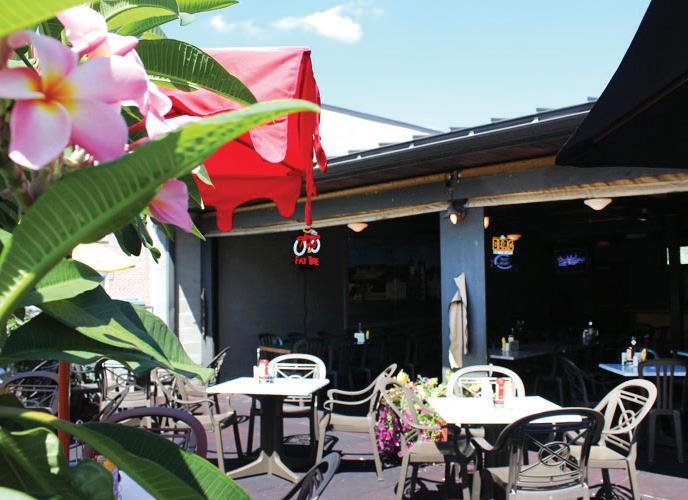

California native and country artist Tyler Rich is coming to Columbia. Rich, whose eponymous second album came out in 2018, has performed with country superstars such as Dustin Lynch, Sam Hunt, Brett Eldredge and Justin Moore. Aug. 16, 8 p.m., The Blue Note, $15, 874-1944

Honoring the life of retired Columbia firefighter Marc Wright, the second Marc’s Dash 5K will benefit the Firefighter Cancer Support Network and Safetynet of Missouri. There will be first place awards given out to the first overall male and female finishers and the male and female wheelchair or Handcrank finishers, as well as awards for the top three male and female finishers in each age division. July 4, 8 a.m. 5K; 9 a.m. kids 100-yard dash, CenterPoint Church, $45 day of race; $35 virtual runner; $15 kids 100-yard dash, marcsdash.com
Show-Me State Games Shelter Insurance Torch Run
Watch the Torch Run conclude here in Columbia at the start of the Show-Me State Games. The run, which goes through 10 Missouri cities, began on April 5 in Hannibal. The torch will stop at MU before ending at Shelter Insurance. July 19, 3 p.m. MU; 3:30 p.m. Shelter Insurance, free, lorenzep@missouri.edu
Who wouldn’t want to play glow-in-the-dark golf? Head over to L.A. Nickell Golf Course or Lake of the Woods Golf Course for the nine hole, two-person glow ball golf tournament. Aug. 23, 8:30 p.m., L.A. Nickell Golf Course; Lake of the Woods Golf Course, $50 individual player; $100 team, 874-7538; 874-7539
Support the Ronald McDonald House of mid-Missouri in the annual Red Shoe Ride bike ride and 5K. Walk or run the 5K on the Katy Trail, or pick one of the 12-mile, 35-mile or 65-mile bike rides along the road and the trail. There will be free pizza and beer at the after-party. Aug. 24, 7:30 a.m. to 4 p.m., Katfish Katy’s, $30–90, 443-7666
Courtnie Leverich, 6, kicks her feet at the edge of the Silver Fork creek at the Pinnacles Youth Park in Sturgeon. “Every now and then I try to get out there with the kids,” her father, Jeff Leverich, says. “They love going. They get very excited every time.”



Saturday, Aug 3

Places 1-5 Plus Reserve Grand Champion & Grand Champion/People’s Choice
Categories:
• Chicken
• Pork Ribs
• Beef Brisket
www.visitbentoncomo.com